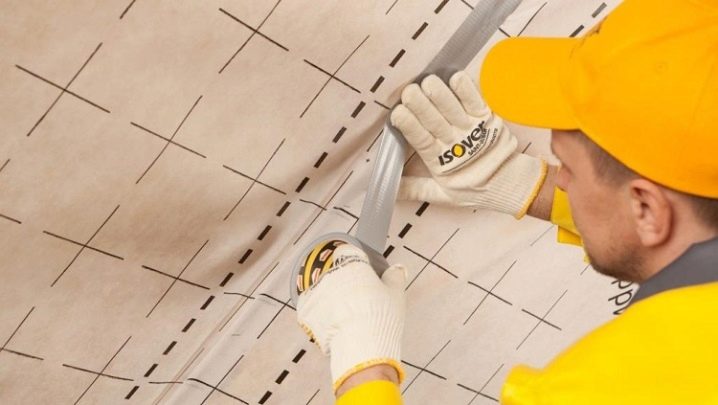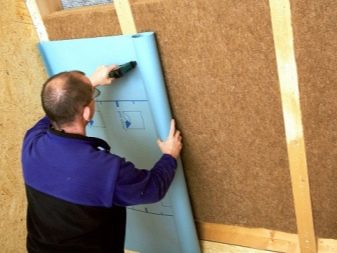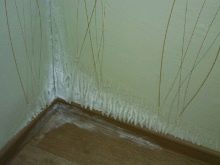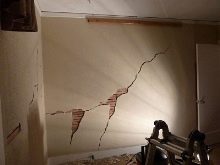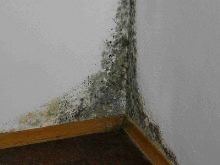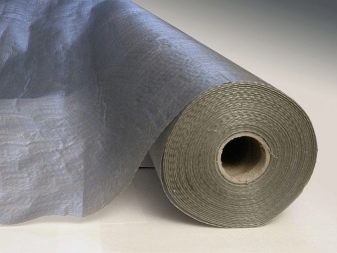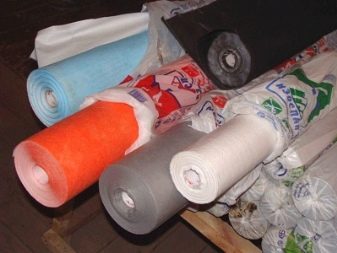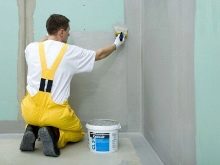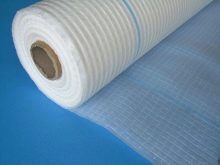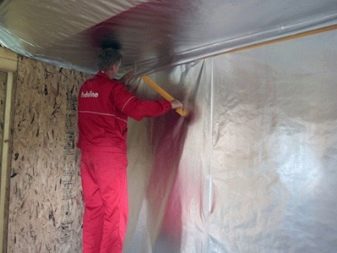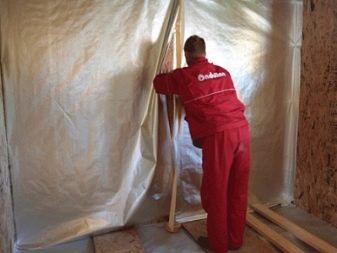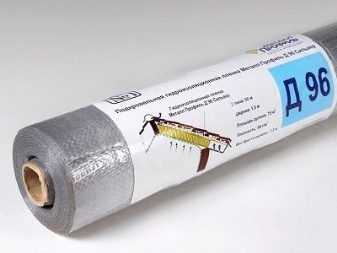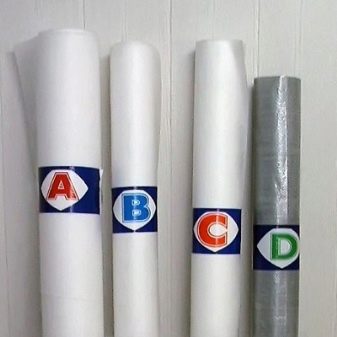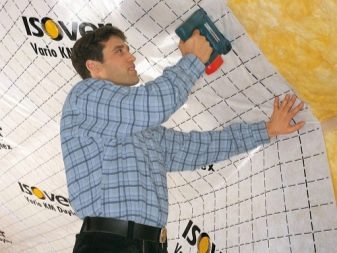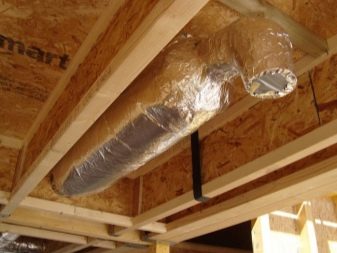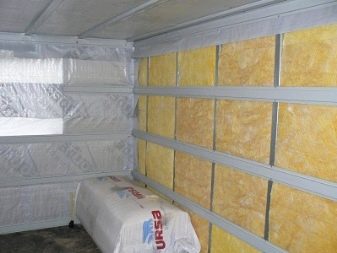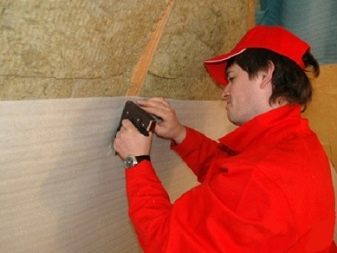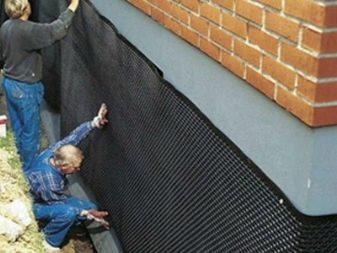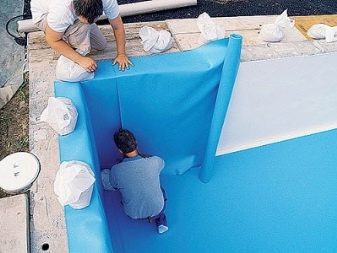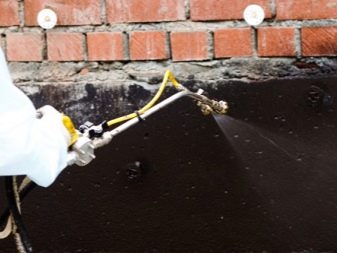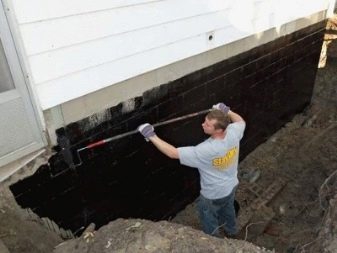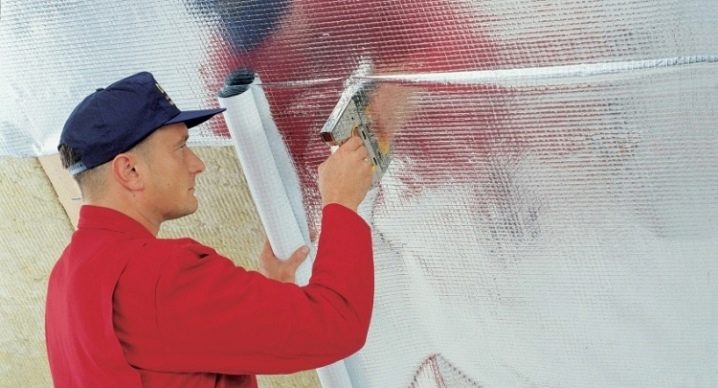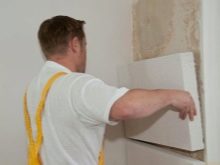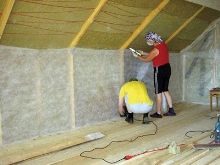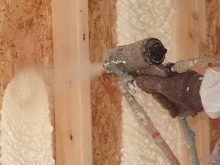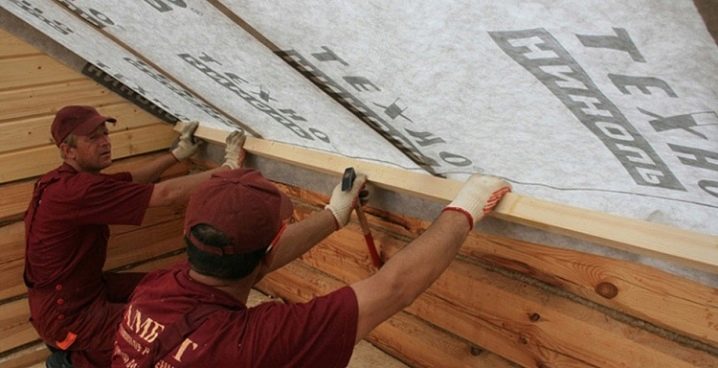The subtleties of the process of vapor barrier walls
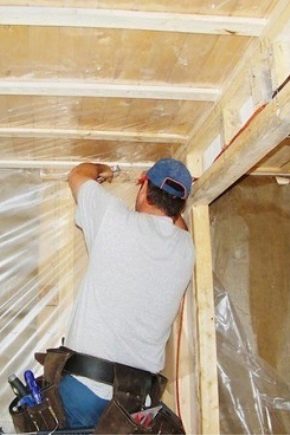
The traditional material for the construction of many houses and in our age of technology is wood. It is used for such purposes since time immemorial. To become the owner of green housing, people pay attention to this material. But, nevertheless, the construction process has undergone significant changes.
Today, people tend to maximize the life of such buildings. For this are used and additional building materials. These include steam insulation for the walls of the house made of wood. About its features, types, device, as well as the method of installation is to talk more.
Special features
A vapor barrier is used for the walls of the wooden house, which is necessary in all cases. The reason is the characteristics of the wood itself as a material for construction. The fact is that it is perfectly breathable, but at the same time absorbs a large amount of water, which causes its swelling.
And if you do not take a certain set of actions, then this may cause the following consequences:
- walls will begin to swell or become crooked;
- the house may begin to sink due to the fact that the density of the wood will begin to increase;
- damage to the finishing materials and wall covering due to their movement will begin;
- mold may start to appear in the corners of the house, which will cause an unpleasant smell;
- if water gets into cracks in winter and freezes, its increase in volume will cause an increase in the deformation of the walls;
- in addition, the freezing of the walls will begin much faster, which will cause an increase in the cost of heating the room;
- moisture absorption in the material of the insulation can cause it to soften, and as a result, its destruction.
But all these consequences can be avoided if you make a vapor barrier layer, which should be made immediately after the finishing material and tightly adjacent to the insulation.
Kinds
The following building materials can be used as a vapor barrier:
- plastic wrap;
- membrane film;
- steam insulating mastic.
Polyethylene filmWith a thickness of just 1 millimeter, is the most affordable and simple option. It has only one major drawback - it completely blocks the circulation of air masses. For this reason, the walls just stop breathing. It is necessary to use this material with great care.
It is not necessary to strongly tighten it, otherwise seasonal expansion of materials will lead to its deformation and rupture.
If we talk about vapor barrier masticthen it is perfectly breathable and holds water, preventing it from getting inside. It is usually applied directly before finishing the room.
Another good option for insulation can be membrane film. This type of insulation provides reliable protection from moisture, leaving at the same time air circulation of the prescribed volume. This option can be called the most frequently used in our time for wooden houses.
In general, if we talk about membrane films,As an excellent option for the vapor barrier of a wooden house, both from the inside and as an external vapor barrier, then it should be said about their advantages, such as:
- keep condensate well and protect insulation from its penetration;
- withstand extreme temperature extremes;
- the reinforced fiber structure is the cause of the good wear resistance of the coating and its durability;
- provide good gas exchange between the environment and the room;
- pass the optimal amount of moisture;
- a number of membranes is reinforced with foil, which allows to reflect the heat that comes from the house. This allows the heater to maintain the temperature in the room during the winter season.
It should be said that their types of membranes are divided into the following two categories:
- foiled - designed to prevent the penetration of moisture as much as possible;
- anti-condensate - can keep warm together with vapor barrier for walls.
It should also be noted that, depending on the location of the material in different parts of the house, the following categories are distinguished:
- A and AM - protection of insulation in the walls and roof from the effects of external factors;
- B and C - protection of insulation in the walls and roof from moisture from the inside;
- D - protection of the floor from moisture, which comes from the ground.
It is worth more familiar with each category.
- So, Category A materials They are usually mounted under the roof, exterior finish of the wall on the insulation or in the ventilation shaft. In order for the membrane to perform its function well, carrying out the passage of moisture inside and blocking it from the outside, the layer should be carefully laid. Layer with marking should look towards the street.
- If we talk about the category of AM, then its structure consists of two elements: spunbond layers and a diffuse film. If we talk about spunbond, then it is worth bearing in mind a special type of creation of a polymer moisture-proof film. In this case, the fiber will consist of artificial filaments, sewn under the influence of chemicals, heat and water jets. As a result of this combination, it turns out high-quality porous fiber, which is particularly durable, perfectly permits air and moisture to the outside, and protects from wind and precipitation.
- Vapor barrier category B used to protect the walls of the house of wood from moisture from the inside.It is also used for finishing the internal parts of the roof, which will be especially important when it is planned to make a living room in the attic where you can live all year round, for example, an attic. In this case, multilayer materials will be an excellent protection from the wind, and foil - will keep the heat indoors. By the way, this type of vapor barrier can be used for floor insulation, as well as for floors between floors.
- Category C The strongest membrane consists of two layers. It is used in the same cases as category B coatings. In addition, such a membrane is used to heat unheated rooms that are adjacent to the house: basements, basements, verandas and attics.
- Category D Options made of polypropylene, and a special lamination layer is added to them. This allows you to use them for warming floors, as well as roofs.
Device
In order for the vapor barrier to be performed correctly, it is necessary to clearly understand that it is made inside and outside by technologies that differ significantly from each other.For example, the insulation of the walls of a frame house is done from the inside, because of which the vapor barrier is placed on the inside. If we talk about the basement or the basement of a brick house, the vapor barrier will be placed outside.
In pools, as well as in houses of aerated concrete, it is necessary to perform vapor barrier on both sides, due to the characteristics of the materials used for their construction.
It should be noted that before working on insulation should prepare the work surface. It must be cleaned of dirt and unnecessary elements, and then apply a protective coating.
Usually use liquid rubber, which, although applied with the help of special equipment, but has excellent protective characteristics. Usually it consists of two mixtures, which, after mixing, almost immediately polymerize. Therefore, the solution is prepared immediately before use and it is applied using a special two-flare gun, which allows you to spray liquid under pressure.
Installation
In order to properly lay a vapor barrier, you must first know what a house is.It can be frame or made from timber. The fact is that stacking material inside and outside is not the same thing. Laying will be done in different ways.
- If we talk about outdoor vapor barrierthen it is necessary to protect the house from the effects of cold wind, you should use a layer that will perform this function. A waterproofing is needed only when the building is old and it must be protected from moisture.
- If a layer is laid with waterproofing inside the walls, you should be aware that water, when evaporating on the surface of the material, should go somewhere. That is, the junction to the heater should not be too tight - you should leave a small gap.
- If the house is made of a cylindrical beam, the gap for drainage is already present, as the bar has a natural rounding. In this case, the membrane must be attached directly to the logs with a stapler. After you need to crate and install the internal finishing material.
- If the house is made of rectangular timberthen it is better to mount the membrane on the counter grill when installing the insulation.For it should be used as anchorage small wooden bars of the same size. They are placed in a certain interval, which allows you to keep insulation. A vapor barrier is placed on top of it. By the way, this technology will be used for a frame house made of wood.
If the vapor barrier is to be performed outside, then the film should, as it were, lie beneath the covering layer and adhere well to the insulation. At the same time, there should also be a place for the accumulation and discharge of condensate. In this case, the technology will be as follows:
- if the log is round, then the vapor barrier will be secured with a construction stapler;
- all the surfaces of the joints must be glued with construction tape;
- if the house is frame or from a rectangular bar, the membrane should be placed on the counter lattice in the same way as was done from the inside;
- the film is nailed with wooden slats at the same intervals as the counter-lattice racks.
Attention should be paid to another option for mounting a vapor barrier, which is universal. This method will be used when mineral materials are used as a heat insulator. This process consists of the following steps:
- the vapor barrier film must be positioned on the side that is needed, after which it should be carefully and accurately secured to the crate. Damage to the film in this process is unacceptable;
- after that, possible gaps should be glued, as well as places where there are punctures or overlaps;
- it is necessary to make a crate with the use of bars for the formation of good ventilation;
- plasterboard, wall panels or the necessary finishing materials should be put on the structure.
By the way, it would not be superfluous to consider the issue of the ratio of insulation and vapor barrier, since it is quite important.
It is necessary to understand when it is really possible to simply insulate the walls with a film of polyethylene, and when protection is needed more qualitatively. In this case, there are two options.
- If foam is used as insulation, polyurethane foam or something similar, then to protect them, it is not necessary to mount the film, since moisture absorption is uncharacteristic for them. But if the house is insulated with ecowool or mineral wool, or the same material as sawdust, then the membrane should be used without fail, as wool that has become damp will definitely become dust in literally 1–2 years.
- If the house is old and is made of wood frame or the same type of bulk structure, the layer to retain moisture will be necessary in any case to protect the very same wood.
Tips and tricks
In general, the installation of a vapor barrier is an extremely necessary and useful thing for almost any building. But it will not be superfluous to give a few valuable tips that will help you choose the right vapor barrier. It will not be superfluous from the very beginning to understand how to carry out the installation of vapor barrier if the house is a frame. First you need to install the membrane with the right side, and then attach it to the racks using a stapler. After that it is necessary to glue the joints with mastic or scotch.
If polyurethane foam, polystyrene foam, ecowool or something similar is used as a heater, the vapor barrier may not be useful if there is effective ventilation.
If there is a need for a vapor barrier, then you should understand and figure out what advantages this or that version of its installation will give. The choice of the vapor barrier installation scheme should be based on various factors, namely:
- type of house;
- intensity of use of the room;
- seasonality of its use.
In general, as you can see, creating a vapor barrier with your own hands is an extremely important matter, which requires a clear understanding of the whole process before it starts. You can make a vapor barrier at home by yourself. The main thing is to clearly know what to do, what it is for, and what results you want to get at the end of the process.
Vapor barrier will extend the life of the wooden building, give it strength and reliability.
You can find out how to make the correct installation of a vapor barrier film in a frame house by watching the video a little lower.
